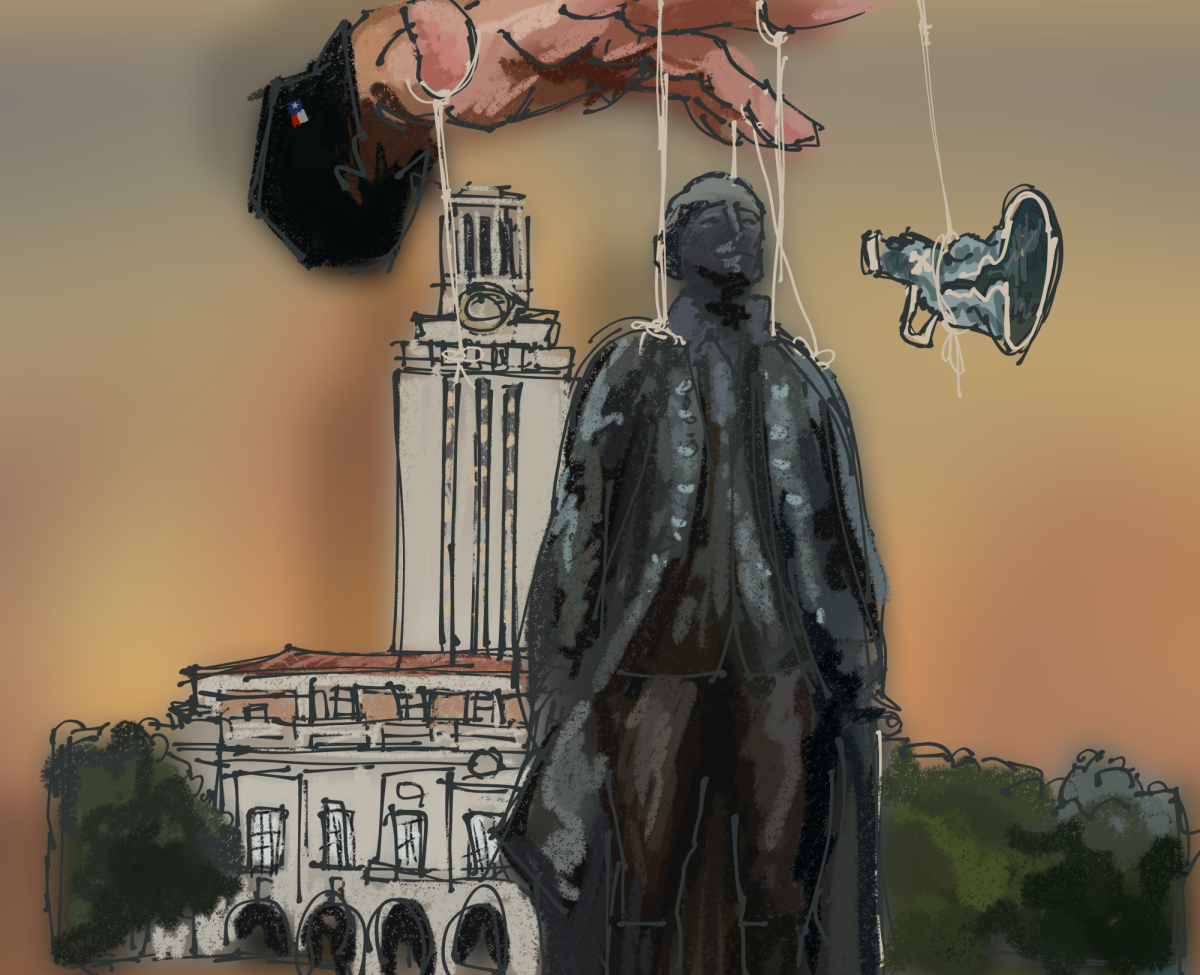Nicholas Cumberland died in November after a car crash on the way home from a Texas Cowboys initiation retreat. After his death, Cumberland’s parents heard disturbing reports of hazing that weekend. According to Cumberland’s parents, pledges at the retreat experienced a weekend of drinking and were deprived of sleep before driving home at 4 a.m. According to Cumberland’s family, the weekend left welts on their son’s body that were still visible when he died.
Every student knows hazing takes place at UT. The University sends all of us an email once a semester with the subject line “Texas hazing statute summary and the University of Texas at Austin hazing regulations.” The email contains the school’s hazing memorandum, including a list of organizations that have been penalized for hazing and how long their disciplinary status will last. The memorandum does not provide any details about what the group did to deserve censure for hazing.
According to Sara Kennedy, director of strategic and executive communications for the Office of the Dean of Students, the Office maintains a website with more descriptions about penalized organizations, but they don’t send this information out to students. While the website includes details about the specific type of hazing conducted, it uses vague terms such as “Physical Brutality” and “Calisthenics.”
Students tend to discover substantial details about hazing incidents only when a situation is critical, and this information paints a very different picture than the sterile language in UT’s official report.
Freshman Jack Phoummarath died after drinking between four and six bottles of liquor at Lambda Phi Epsilon in 2005. In 2006, Tyler Cross, a freshman pledging the now-disbanded UT chapter of Sigma Alpha Epsilon, fell to his death from a fifth floor balcony after sleep deprivation and coerced alcohol consumption. According to the Cumberlands, at the Cowboys retreat prior to their son’s death, a pledge was forced to bite the head off a live hamster.
If the University’s memorandum included the events the Cumberland family said took place at the Cowboys retreat, it would likely refer to them as “Physical Brutality,” “Consumption of Food/Liquid/Alcohol” and “Mental Health Threat.” The language used in the University’s official communication with students is vague to the point of uselessness.
Given the extent to which some groups take hazing, students — and their parents — deserve more information when deciding whether or not to join an organization.
Students and parents need to understand the specific dangers of an organization before joining, and this danger cannot be conveyed in vague definitions. Without transparent communication, students unknowingly risk physical and mental abuse in search of a community. Most UT students know hazing happens — we all got the email — but few of us understand exactly what that means.
While most schools like UT release nearly the same amount of information on hazing incidents, some private schools have set a new standard for transparency. Despite being confined by the same federal guidelines for protecting students’ privacy, schools such as Cornell release substantial details about hazing when an organization is censured. On a website dedicated to hazing, a list of sanctioned organizations contains a detailed summary of the activities which led to their punishment.
Details like these provide crucial insight into the realities of hazing on college campuses. Less hazing involves physical abuse or violence — much of the damage inflicted on victims of hazing is mental. But mental abuse is impossible to communicate through clinical definitions. Cornell’s description of a group giving new members “the choice of either smoking or eating a cigarette” reads very differently than “Consumption of Food/Liquid/Alcohol,” as UT would label it.
By using sterile and nondescriptive language, UT separates the hazing it tells students about from the hazing that kills students. “Physical Brutality” carries different weight than “(applying) Icy Hot to their genitals.” “Alcohol Consumption” isn’t the same as forcing a student to drink “15 shots in less than an hour.”
UT already sends out a mass email about what groups are censured — it’s required to do this by law. UT already maintains a website with details about the types of hazing involved in these censures. This is a step in the right direction. But in order to give students the information they need to make informed choices, UT needs to take another step forward.
Tell us what happened. Send it to us with the hazing memorandum.
Student orgs are a critical part of the UT experience. For some students, so is hazing. UT needs to provide students with the information they need to make the right choices when joining an organization. It’s possible, it’s legal and it may even be easy. All we need to do is prioritize it.
Hazing isn’t going anywhere anytime soon. The least we can do is be open about it.





















